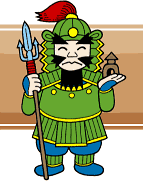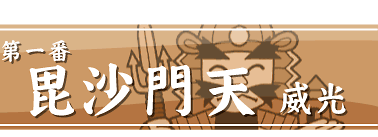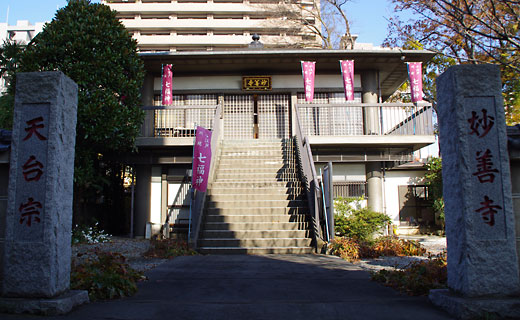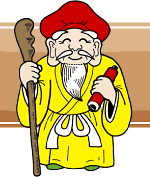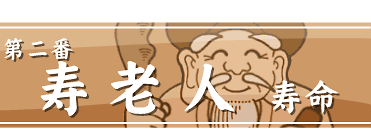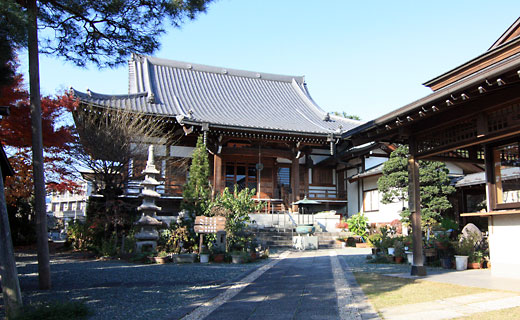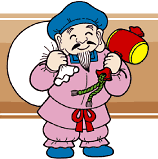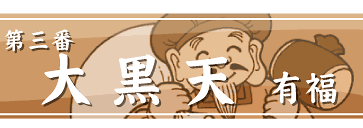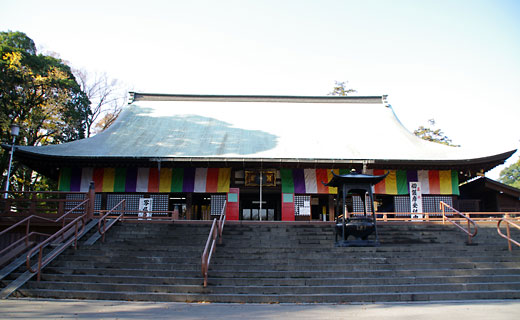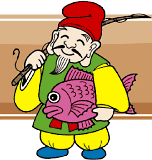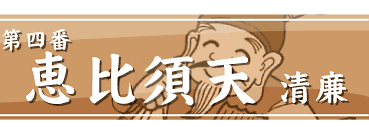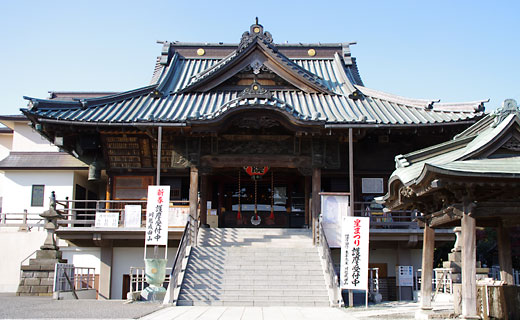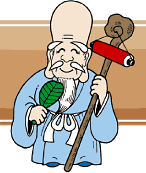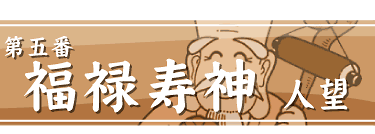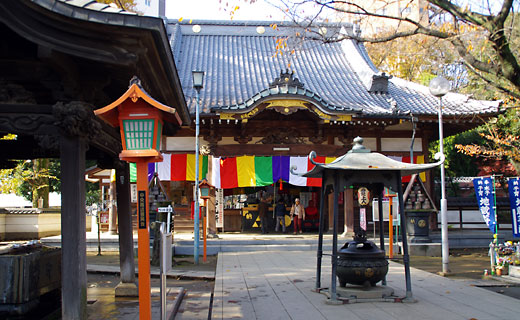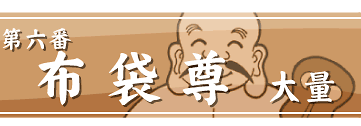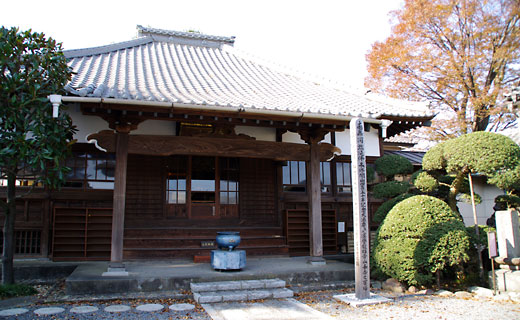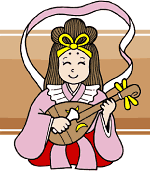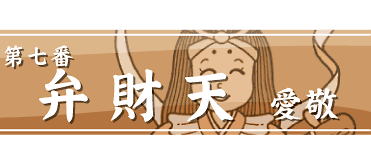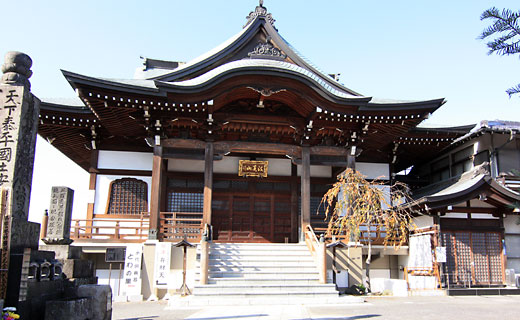
ABOUT KOEDO KAWAGOE’S SEVEN LUCKY GODS
|
In Koedo Kawagoe there are temples where the Seven Lucky Gods have been worshipped from ancient times. History of beliefs of Seven Lucky Gods in Japan became noticeable during the late Muromachi period (1336-1573), based on the teaching of Shichinan sokumetsu, shichifuku sokushō. Shichinan means seven sufferings such as floods or fire and the sutra Nin’ōhan’nyakyō teaches us, that if seven forms of sufferings immediately stop (sokumetsu), seven forms of happiness (shichifuku) will arise immediately (sokushō). Later, during Edo period the great master Tenkai Daisōjō, the head of Tendai sect and a close associate of shōgun Tokugawa Ieyasu, the ruler of Japan, had a deep interest in Seven Lucky Gods. While praying for peace and happiness of all living beings, great master Tenkai Daisōjō described the seven forms of happiness and good fortune (shichifuku) as follows. The purity and the unselfishness are represented by Ebisuten. The affluence and the prosperity are represented by Daikokuten, while the power and the influence are embodied by Bishamonten. The respect and love are represented by Benzaiten, and the popularity is embodied by Fukurokujujin. The longevity is represented by Jurōjin, and the lost one, the large quantity is embodied by Hoteison. That’s the reason, why so many people made pilgrimage to shrines and temples to worship to Seven Lucky Gods while praying for peace, safety and health. The course of the pilgrimage to Seven Lucky Gods in Koedo Kawagoe is about 6 kilometers long. Starting from Kawagoe station and Kawagoeshi station on the Tōbu Tōjō line, or from Hon-Kawagoe station on the Seibu line, you can manage this walk in a half day, just good enough to enjoy sightseeing and improve your health condition. How about visiting ancient temples of Koedo Kawagoe and praying for you and your family’s health and wishes? |
KOEDO KAWAGOE
SEVEN LUCKY GODS WALK GUIDE
|
BISHAMONTEN < power and influence > |
Myōzenji temple, which belongs to Tendai sect, was founded in 1624 (first year of the Kan’ei era) by priest Son’nō Hōin, but the temple hall was destroyed by fire in 1788 and rebuilt in 1978. Honzon, the effigy and the holy image of this temple, is Fudōmyō’ō, one of kings of wisdom, called Acala in Sanskrit. Sculpture was created by Master Chishō Daishi (known also as Enchin, 814-891), former head priest of Tendai sect. Also Amida Nyorai, the celestial Buddha called Amitābha in Sanskrit, is enshrined aside. |
MYŌZENJI TEMPLE |
|
JURŌJIN < longevity > |
Ten’nenji temple, also known as Jinenzan Dainichi’in, was founded in September 1554 (23rd year of Temmon era) by priest Eikai Shōnin. The Dainichi Nyorai, celestial Buddha Vairocana, interpreted as the Dharma Body of the historical Buddha, is enshrined in Ten’nenji temple. This temple is also known as place where En’nin, the Great Master Jikaku Shōnin, once worked. |
TEN’NENJI TEMPLE |
|
DAIKOKUTEN <affluence and prosperity> |
History of Kitain temple began in 830 (7th year of the Tenchō era) when it was founded by the Great Master Jikaku Shōnin according to the imperial decree of Emperor Jun’na. Temple was destroyed during Kawagoe Great Fire in 1638, but was rebuilt thanks to shōgun Iemitsu Tokugawa, who relocated a part of Tokugawa’s Edo palace. Visitors can see all cultural assets of Kitain temple. The Goma (Homa) ritual, Buddhist rite of cedar-stick burning, which exorcises the evil and protects people, is held every day here. |
KITAIN TEMPLE |
|
EBISUTEN <purity and unselfishness> |
Naritasan is a branch temple of the Daihonzan Naritasan Shinshōji main temple, belonging to Shingon sect, the school of Japanese esoteric Buddhism. Honzon, the effigy and the holly image of this temple, is Fudōmyō’ō, one of kings of wisdom, called Acala in Sanskrit. This temple is well known as a place to worship for traffic safety and is very familiar to local people being called “Ofudō sama, temple with turtles”. |
NARITASAN TEMPLE |
|
FUKUROKUJUJIN <popularity> |
Renkeiji temple was built by Daidōji Masashige, the lord of Kawagoe castle, during the Warring States period (15-16th century) for the Great Master Bodō Renkei Daishi, while the founder is the priest Kanyozontei Shōnin. Today, the Renkeiji temple is famous as a place connected with the great teacher Kosodate Doryū Shōnin, who was involved in education for poor children. This temple was one of the 18 temples of Jōdoshū sect designated during Edo period as universities for monks and priests, also called Kantō Jūhachi Danrin. |
RENKEIJI TEMPLE |
|
HOTEISON <large quantity> |
Kenryūji temple, also known as Ryōshinji, belongs to Jōdoshū sect. This temple was founded in 1558, when Daidōji Masashige, lord of the Kawagoe castle and chief statesman of Odawara Hōjō clan, asked the priest Kanyozontei Shōnin to build new temple here. Under very old buxus tree located in front of the temple hall is a monument with famous poems of monk Tokuhon gyōja and very old tōrō lantern. The main temple hall was rebuilt in 1881 (14th year of Meiji period). |
KENRYŪJI TEMPLE |
|
BENZAITEN <love and respect> |
Myōshōji temple was founded in 1375 by 4th abbot of Ikegami Hon’monji temple. All temple halls were originally located in nowadays Saiwai-chō district, but in Edo period, during consolidation works of Kawagoe castle town they were all relocated to the present place. The worship of Benzaiten began here during Muromachi period, when lord of this manor built small shrine and hill, where little stones were shaped in the text of Buddhist sutras. Later, after construction of Kawagoe castle, Benzaiten was worshipped by local lords, especially by lord Ōta Dōkan. |
MYŌSHŌJI TEMPLE |
First day of every month is en’nichi, the Day of Seven Lucky Gods
Temples are open from 9 AM to 4 PM
(Opening time is subject to change due to the Buddhist memorial services.)
In all temples you can buy ema, wood plaques for your prayers and wishes, takarabune, treasure ships; and colored papers shaped as Kawagoe’s Toki no Kane Bell. You can collect these items during your walk and worship. |
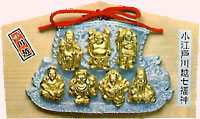 Ema wood plaques with Seven Lucky Gods |
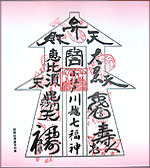 Shikishi colored papers with Kawagoe’s Toki no Kane Bell |
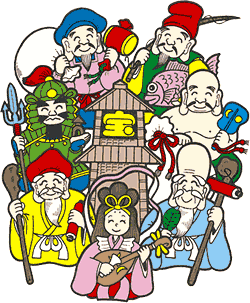 Kawagoe, city of history and traditions, was once called “mother of Edo”, and in contrast with so called Ōedo, the big Edo (Tokyo), Kawagoe’s nickname was Koedo, the “little Edo”. In present days, the atmosphere of former castle town remains in many spots of Kawagoe city. That’s the reason why every year a lot of tourists come to Kawagoe to visit its cultural heritage.
Kawagoe, city of history and traditions, was once called “mother of Edo”, and in contrast with so called Ōedo, the big Edo (Tokyo), Kawagoe’s nickname was Koedo, the “little Edo”. In present days, the atmosphere of former castle town remains in many spots of Kawagoe city. That’s the reason why every year a lot of tourists come to Kawagoe to visit its cultural heritage.